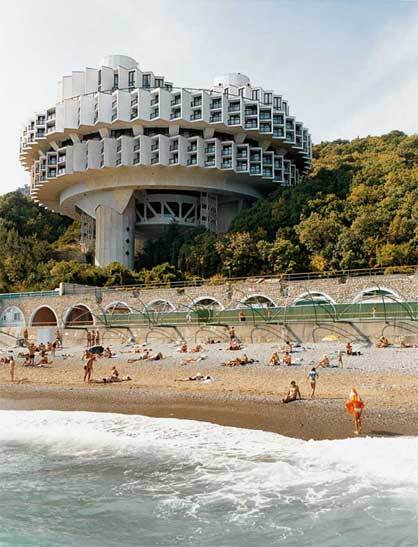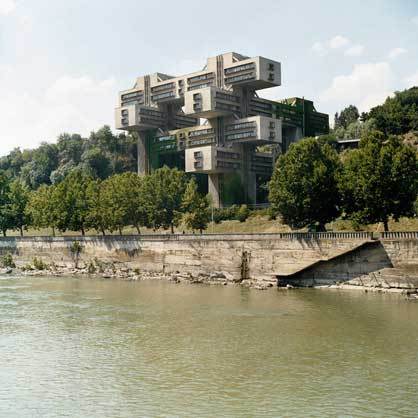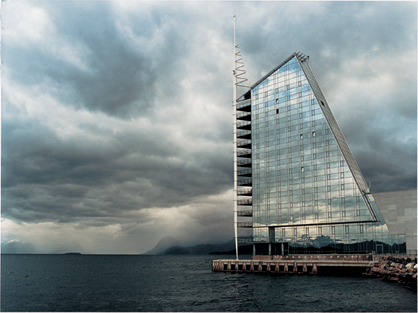Das Gebäude lebt
Text von Nora Schmidt
Berlin, Deutschland
10.06.08
Frederic Chaubin, Fotograf und Chefredakteur des französischen Magazins Citizen K, macht sich auf die Suche nach Orten, die Geschichten erzählen und Bauten, deren Eigenleben er auf subtile Art dokumentiert.
Ikonische Gebäude und dramatische Landschaften sind seine Motive. Frederic Chaubin, Fotograf und Chefredakteur des französischen Magazins Citizen K, macht sich auf die Suche nach Orten, die Geschichten erzählen und Bauten, deren Eigenleben er auf subtile Art dokumentiert. Auf diversen Reisen in die ehemalige Sowjetunion, nach Indien, Norwegen, Kambodscha – seinem Geburtsland – und einigen anderen Ländern entstanden Serien, die in internationalen Ausstellungen veröffentlicht wurden und bereits heute ein hochwertiges Zeitdokument darstellen, da schon einige seiner architektonischen Motive nicht mehr existieren.
Druzhba Ferien Center, Jalta, Ukraine, gebaut 1984 von Igor Vasilevsky, Foto von Fredric Chaubin
Interview (nur in englisch)
Frederic, you are the chief editor of the magazine Citizen K. for many years now. What made you pick up the camera?
The first time I met the people, who would later be involved in Citizen K, it was to show them a photographic work. I had written a text to explain this work, which brought their attention. Without considering the pictures, they invited me to write for the magazine. After a short time I turned to be the editor in chief. It took me about 5 years before succeeding in publishing pictures in Citizen K. Very rarely people will admit that you may have visual skills as well as literary ones. My main asset, I believe, is to have both abilities.
When taking pictures, you focus on architecture. What is so special about photographing architectural objects?
I don’t make a difference. I just think that a picture should bring you to a story. In that way I’m very far from the architecture photographers that believe in the possibility of an objective picture. I only believe, personally, in subjectivity. My photographs always include a foreground or a background to contextualise. They are meant to bring you into the frame like a movie set does. Furthermore, a building has also its biological life. It’s not only related to space, but also to time. It travels through seasons and years, offering a changing face. This dimension brings back the main topic of photography, which is disappearance.
Roads Ministry, Tiflis, Georgia, gebaut 1975 von Viktor Djorbenadze, Foto von Frederic Chaubin
How did you get the idea to photograph former Soviet architecture?
I just took pictures of very unusual buildings without knowing where it would bring me. It took me some time to understand, that this was a subject. As I was travelling though former Soviet Union Republics, the process of finding those orphan and unknown monsters turned into some kind of game. A game I was used to. When I was 25 years old, I worked as a scout for the movie business, looking for natural sets.
This architecture seems futuristic and is partly very innovative. What made such a trend appear in a country like the USSR?
The answer can only be speculative. First of all, because it’s difficult to figure out exactly what were the influences and how much the local architects knew about the rest of the world. Also, because no one is working on this period and very few traces of the process remain visible today despite the buildings themselves. The question is to figure out if this unexpected creativity had been supported by the regime in the open mindedness of the Perestroika or if it was the result of some daring architects taking advantage of a collapsing system and its weakness. At that point there is no clear answer. USSR was a huge political and geographical area encompassing very contradictory realities.
Were those architects famous? What are they doing today?
Those architects had been taught in the same mould, going through the same institutions. They could only work for local or state administrations. At the same time, in some specific fields – basically for leisure, cultural or administrative buildings – they were probably expected to be creative. Some of them gained local fame, even if the collectivist ideology didn’t really leave much place for stardom – In any case, this has nothing to do with our western understanding of notoriety. But they probably remained anonymous out of their specific field of action. Right now, their position is even worse, as this period goes through some kind of purgatory. There isn’t much interest or consideration for it because of the ideological suspicion related to it. The ones that are still alive are now retired.
Zirkus von Kasan, Republik Tatarstan, Russland, gebaut 1967 von Gregori Pichue, Foto von Frederic Chaubin
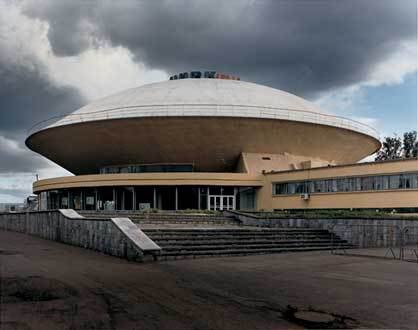
Zirkus von Kasan, Republik Tatarstan, Russland, gebaut 1967 von Gregori Pichue, Foto von Frederic Chaubin
×If you look at the recent architectural development in Dubai, the boom of modern architecture, what do you think of this?
The very broad vision we have of it is precisely related to the present stardom of architects. It turns architecture into some kind of dramatic competition, a challenge that brings the best and, unfortunately, the worst.
Whose architecture/What project would you like to take pictures of?
The subjects are usually brought by the circumstances. I just take the most disorienting directions. I created in the magazine my own “scouting column”, in which I quiet often publish my own work: text and pictures of stories related to a forgotten architectural style or a remote area. It may be Gipsy palaces in Romania as well as ruins of a seaside resort in Cambodia. Behind each there is always an enigma. I love the idea of bringing back flesh to the bones.
Where can the Soviet pictures be seen next?
A selection of them will be shown this summer in Portugal in the Utopia collective exhibition curated by Paul Wombell and related to the PhotoEspana event. And they will be shown at the Chicago Architecture Foundation from July 10 to October 3.
Thanks for the interview
The Rica Seilet Hotel, Norway, gebaut 2000 by Kjell Kosberg, Foto von Frederic Chaubin
The battleship shaped summer camp Le Navi, gebaut 1932 von Clemente Busi, Foto by Frederic Chaubin
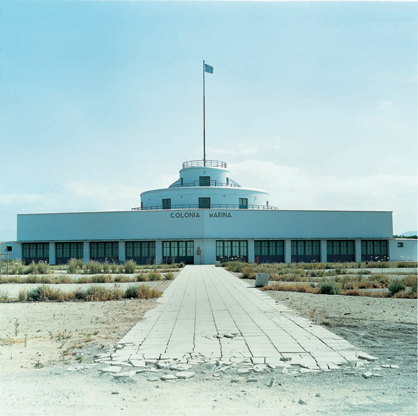
The battleship shaped summer camp Le Navi, gebaut 1932 von Clemente Busi, Foto by Frederic Chaubin
×Der im typisch britischen Stil gebaute Bahnhof in Darjeeling, Indien, gebaut in den 30er Jahren, Foto von Frederic Chaubin
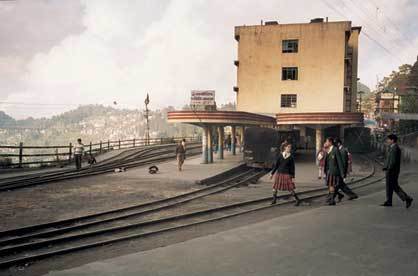
Der im typisch britischen Stil gebaute Bahnhof in Darjeeling, Indien, gebaut in den 30er Jahren, Foto von Frederic Chaubin
×Natalievka, Ukraine, gebaut 1912 von Aleksei Shchusev, dem Architect der 15 Jahre später das Lenin Mausoleum auf dem Roten Platz bauen wird, Foto von Frederic Chaubin
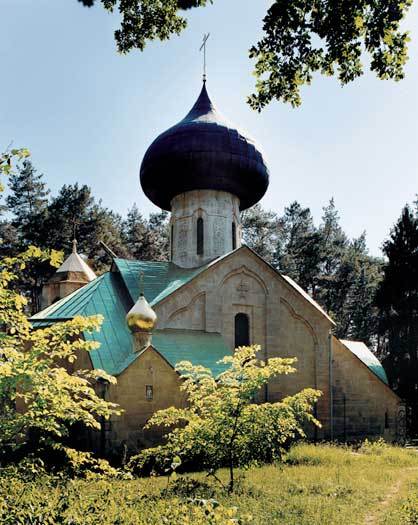
Natalievka, Ukraine, gebaut 1912 von Aleksei Shchusev, dem Architect der 15 Jahre später das Lenin Mausoleum auf dem Roten Platz bauen wird, Foto von Frederic Chaubin
×Diese Sinti und Roma-Unterkunft ist wahrscheinlich nicht älter als zehn Jahre, Rumänien, Foto von Frederic Chaubin
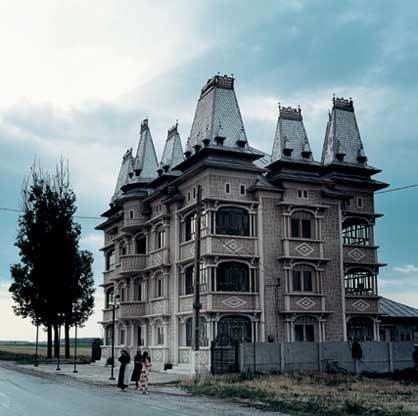
Diese Sinti und Roma-Unterkunft ist wahrscheinlich nicht älter als zehn Jahre, Rumänien, Foto von Frederic Chaubin
×